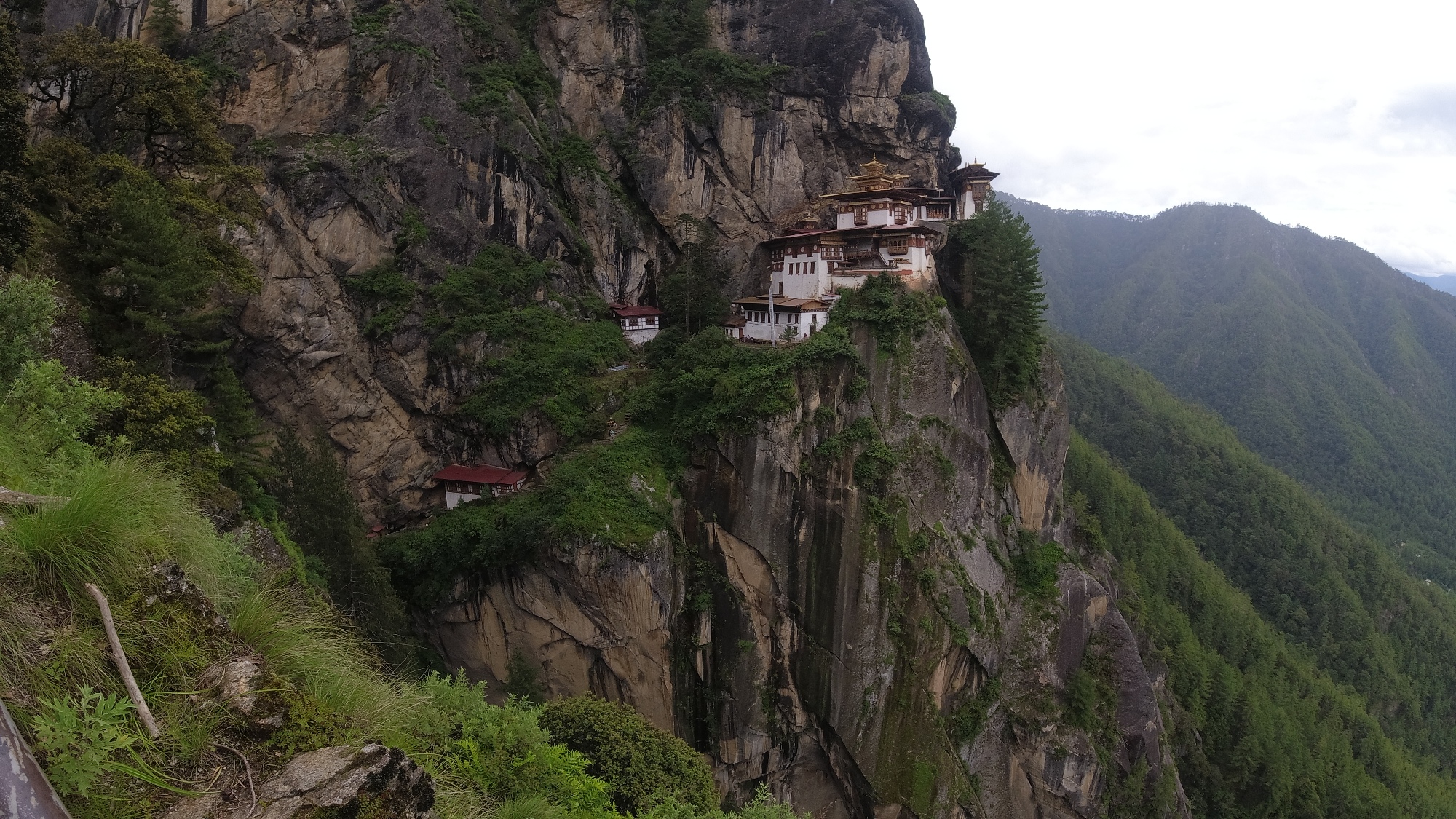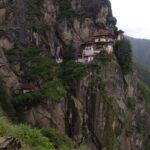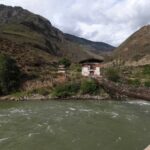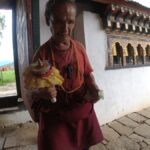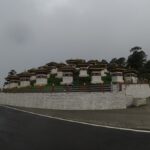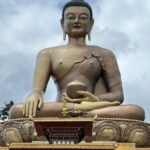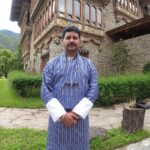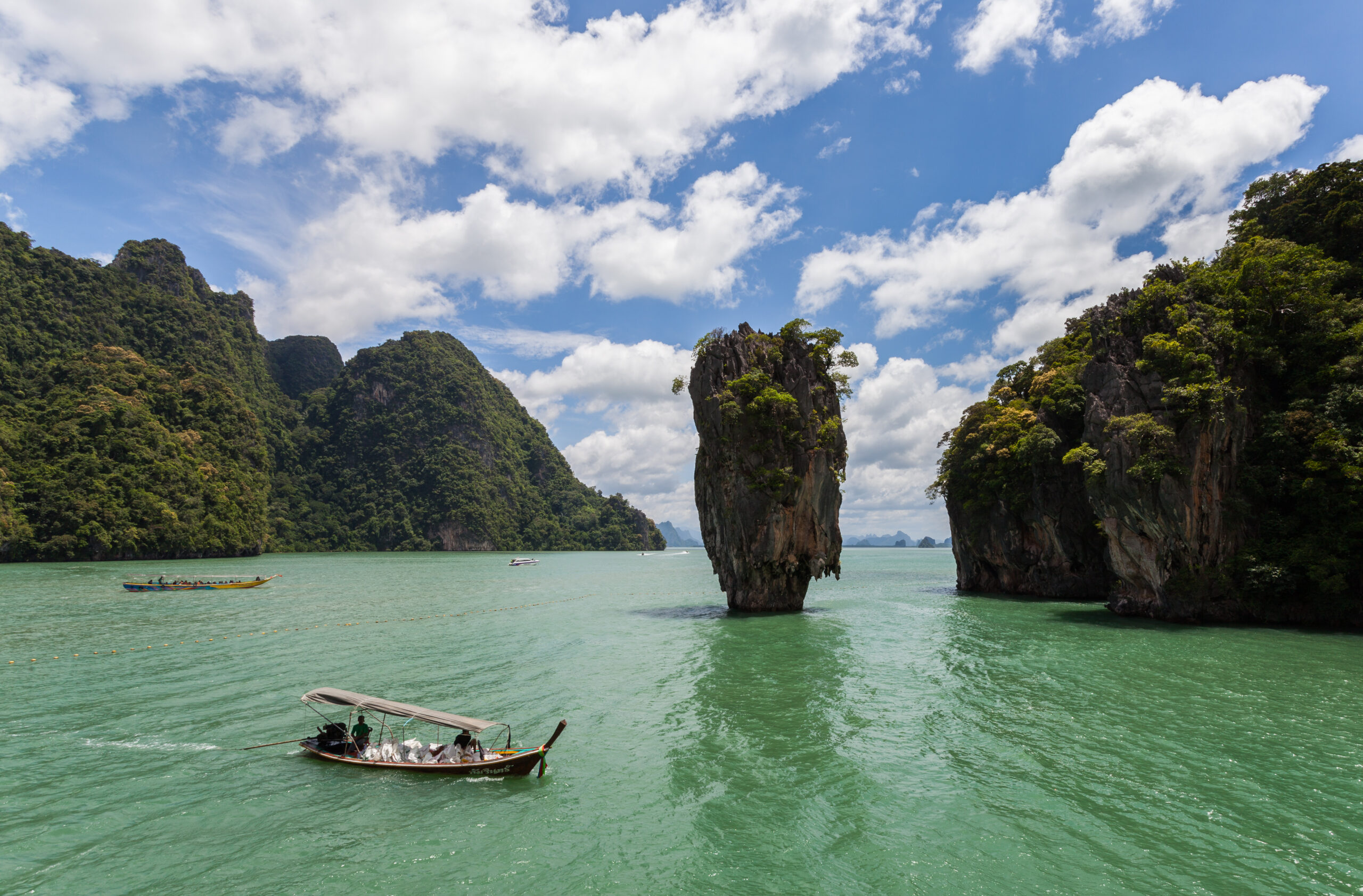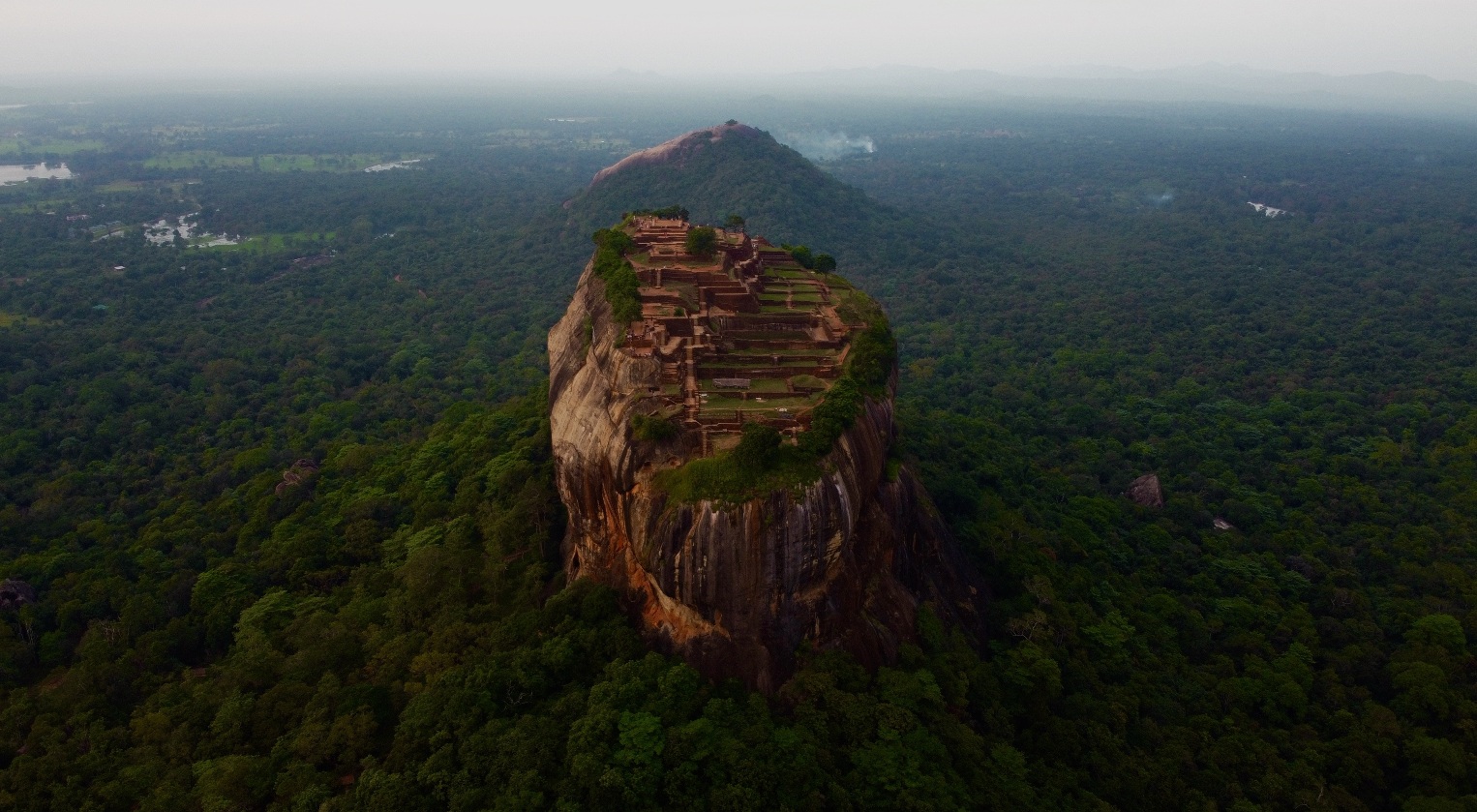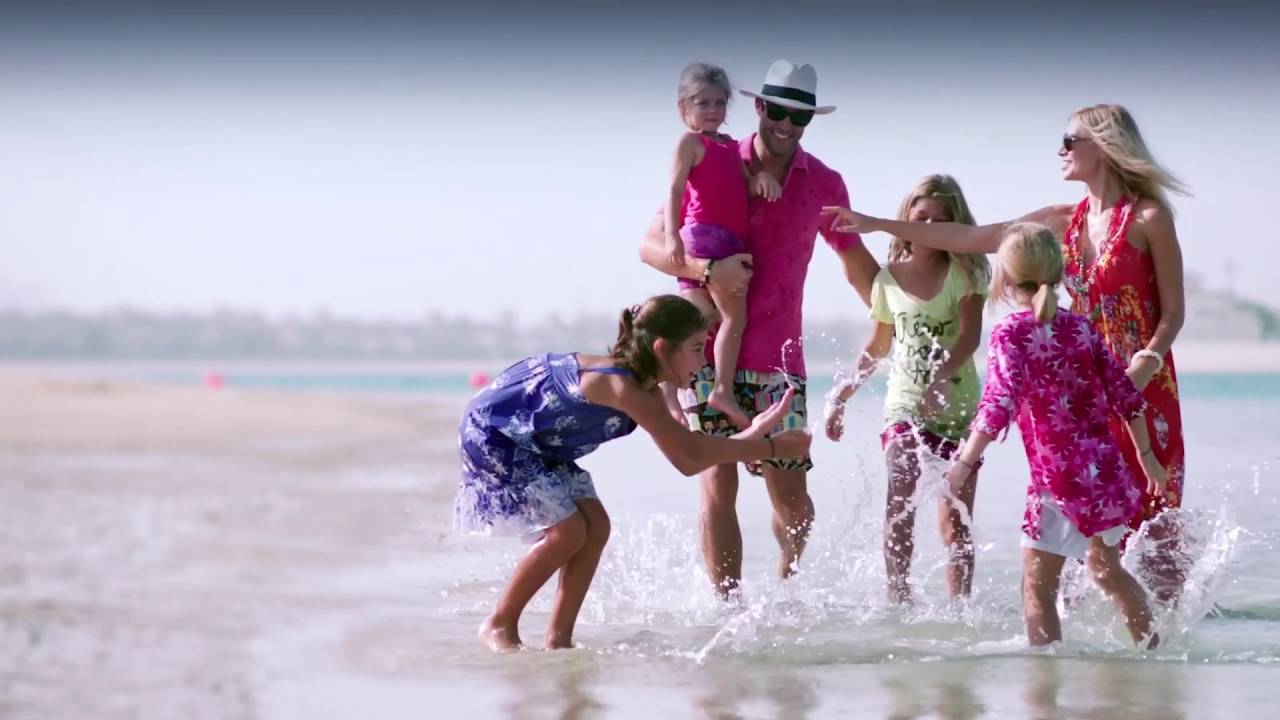About Bhutan
Nestled in the heart of the Himalayas, Bhutan offers a unique and enchanting experience for travelers seeking an authentic blend of natural beauty, cultural richness, and sustainable living. This small kingdom, known for its commitment to Gross National Happiness, embraces a philosophy that prioritizes the well-being of its people and the preservation of its environment.
With its awe-inspiring landscapes ranging from lush valleys to towering peaks, Bhutan is a haven for outdoor enthusiasts, offering trekking, mountain biking, and bird-watching amidst pristine surroundings. The country’s rich cultural heritage is showcased in its vibrant festivals, ancient monasteries, and intricately designed architecture. Bhutan’s policy of controlled tourism ensures a limited number of visitors, allowing for a more intimate and meaningful exploration of its attractions.
As travelers step into this serene realm, they are welcomed not just as observers, but as participants in Bhutan’s remarkable journey towards harmonizing modernity with tradition.
Facts and Figures
Land area : 38,394 square kilo metres
Forest area : 72.5 %
Altitude : between 240metres and 7541metres above sea level
Inhabitants : 700,000
Language : official language “Dzongkha”, English widely spoken
Religion : Vajrayana stream of Mahayana Buddhism (Also known as Tantric Buddhism)
Currency : Ngultrum (equal to Indian Rupee)
Capital : Thimphu
National Tree : Cypress
National Bird : Raven
National Flower : Blue Poppy
National Sport : Archery
National Animal : Takin
Local time : Six hours ahead of GMT and half an hour ahead of Indian Standard Time
Tour Overview
Embark on an immersive 6-night, 7-day journey through the enchanting landscapes of Bhutan, exploring the captivating destinations of Thimphu, Punakha, and Paro. Begin your adventure with a breathtaking flight to Paro, offering unparalleled views of the Himalayan range. Upon arrival, experience the pristine mountain air and then set off on a scenic drive to Thimphu, Bhutan’s capital. Traverse through landscapes adorned with diverse stupas and ancient temples, and immerse yourself in the vibrant blend of modernity and tradition. Discover Thimphu’s unique charm as you explore its bustling main street, market, and local crafts bazaar.
The following day, pay a visit to Buddha Point for panoramic views of the Thimphu valley before embarking on the invigorating “Buddha Nature Train” hike to Changangkha Lhakhang, offering glimpses of local life and pristine forests. Continue your exploration with a visit to the historic Changangkha Lhakhang, showcasing the rich Bhutanese heritage. Learn about Bhutan’s postal service and traditional paper-making at local factories, and witness the grandeur of Trashichhoedzong, an impressive fortress-monastery.
The journey continues as you journey to Punakha via Dochula Pass, where you’ll be treated to mesmerizing views of the eastern Himalayas. Discover the fertility temple of Chimi Lhakhang and marvel at the architectural splendor of Punakha Dzong, set against the backdrop of two converging rivers. Uncover the stories of Bhutan’s culture and spirituality at Sangchhen Dorji Lhuendrup Lhakhang Nunnery and Khamsum Yuelley Namgyal Chorten.
Moving on, head to Paro and visit the National Museum housed within Ta Dzong, followed by a stroll to the historic Rinpung Dzong. A highlight of your journey awaits with an excursion to the iconic Taktshang Monastery, perched dramatically on a cliffside. Experience the profound spirituality and natural beauty that have drawn visitors for centuries. Conclude your exploration with a visit to Drukgyel Dzong and the ancient Kyichu Lhakhang, an emblem of Bhutan’s Buddhist heritage.
As your transformative journey comes to a close, bid farewell to the serene landscapes and vibrant culture of Bhutan, departing from Paro with cherished memories and a profound connection to this awe-inspiring Himalayan kingdom.
Detailed Tour Plan
DAY 01: ARRIVE PARO BY AIR & TRANSFER TO THIMPHU (55 KMS / 1½ HRS DRIVE)
The flight to Paro is one of the most spectacular in entire Himalayas. Flying along the Himalayan range from Kathmandu, the journey offers fascinating views and an exciting descent into the Kingdom. Bhutan’s first gift, as you disembark from the aircraft will be cool, clean fresh mountain air. After immigration formalities and baggage collection, you will be met by our representative, and afterwards drive to Thimphu, the capital town of Bhutan with enroute stop at Chuzom, the confluence of Thimphu and Paro rivers. Three different style of stupas; Tibetan, Nepalese and Bhutanese adorn this confluence. Shortly before reaching Chuzom, you will see on your left TschogangLhakhang, “the temple of the excellent horse”. It is a private temple, built in 15th century, as the result of visitation from Balaha, the excellent horse, a manifestation of Chenrezig, the compassionate Buddha.
On arrival in Thimphu, check into the hotel. The capital town of Bhutan and the centre of Government, religion and commerce, Thimphu is a unique city with unusual mixture of modern development alongside ancient traditions. With the population of about 90,000 it is perhaps still the world’s only capital city without a traffic light.
Evening an exploratory walk around Thimphu Main Street and market area. Also visit the Local Crafts Bazaar, to browse through example of Bhutan’s fine traditional arts. Here you can buy hand-woven textiles, Thangkha paintings, masks, ceramics, slate and wood carvings, jewellery, interesting items made from local materials.
Overnight at the hotel in Thimphu (Altitude 2400m).
DAY 02: THIMPHU
After breakfast, visit Buddha Point (Kuensel Phodrang). Located at a short drive from Thimphu city centre, visitors can get a good overview of the Thimphu valley from the Buddha point (KuenselPhodrang). You can pay your obeisance and offer prayers to the Buddha, the largest statue in the country and then walk around and take a glimpse of the valley.
Commence the “Buddha Nature Train” from Buddha point to Changangkha Lhakhang (02 hours easy hike). The hike from Buddhapoint to Changangkha Lhakhang is the most popular one to see the locals of Bhutan and at the same time take a forest bath. As you hit the trail you will be greeted by thousands of prayer flags and welcomed by a pristine forest of pines, birch, and rhododendron trees. If you are lucky, you can encounter few wild pheasant and bore. The trail is well maintained and at some places along the trails Gazebos are set up from where you can have a spectacular view of Thimphu valley and ends at Changangkha Lhakhang.
Continue visit the Changangkha Lhakhang, which is a fortress like temple and monastic school perched on a ridge above Thimphu, south of Motithang. The temple was established in 12th century on a site chosen by Lama PhajoDrugomShigpo, who came from Tibet. The central statue here is Chenrezig in a manifestation with 11 heads. From temple courtyard, there is fascinating view of Thimphu valley.
After lunch, take a short drive (15 km) to Pangri Zampa, 16th century one of the oldest monasteries in Bhutan located just north of Thimphu. Here is a monastic school where Buddhist student’s monks learn Lamaism and astrology based on Buddhist philosophy.
Further visit to Bhutan Post Office, the Postal Service in Bhutan was first launched on 10th October 1962 with the opening of a post office in Phuentsholing. In the same year, post offices also opened in Paro and Thimphu.
Traditional Paper-making factory, which comprises of two enterprises; the unit in Thimphu produces traditional handmade paper from natural plants mainly from ‘Daphne’ plant species which is insect-resistant. The other unit in Jimina, 22 km from the centre Thimphu town, recycles waster papers. The traditional handmade papers are widely used for religious scripts, packing materials, hand-carry bags, lampshades, envelopes, calendars. The paper looks a lot like Japanese washi, and in fact a lot of Bhutanese paper is exported to Japan also.
Evening, visit Trashichhoedzong: This impressive fortress/monastery houses Secretariat building, the throne room of His Majesty, the King and various government offices. It is also the summer residence of Chief Abbot and central monk body.
Overnight at the hotel in Thimphu.
DAY 03: THIMPHU – PUNAKHA (75 KMS / 03 HRS DRIVE)
After breakfast at hotel, Drive to Punakha across Dochula pass (3O8Om). In Bhutan, the passes are marked by a large Bhutanese Chorten and prayer flag. Dochula pass offers the most spectacular view over the high peaks of the eastern Himalayas on a clear day.
Enroute, proceed for the walking excursion to Chimi Lhakhang (from hotel it is about 15 minutes’ drive till motorable road and then walk starts through paddy fields and villages. This is total about 1½ hour walk, including both way). The Chimi Lhakhang, situated on a hillock in the centre of the valley, also known as the temple of fertility. It is widely believed that couples who do not have children and wanting one, if they pray at this temple, they are usually blessed with a child very soon. The trail leads across rice fields to the tiny settlement of Pana, meaning ‘field’. A walk through the village near the temple will give you rare glimpses into the daily life and lifestyle of the villagers.
After checking into hotel, proceed to visit Punakha Dzong, a massive structure built at the junction of two rivers. It was the capital of Bhutan until 1955, and still serves as the winter residence of the monk body.
Evening can be spent exploring Punakha village located right on the bank of river.
Overnight at the hotel in Punakha.
DAY 04: PUNAKHA
After breakfast, hike up through fields of chilies, cabbages and rice along the banks of the Mo Chhu to Khamsum Yuelley Namgyal Chorten, a stunning monument recently built by the Queens and consecrated in 1999.
Later visit to Sangchhen Dorji Lhuendrup Lhakhang Nunnery. Perched on a ridge amid pine trees and overlooking valleys of Punakha and Wangdue Phodrang, gleams the magnificent structures of Sangchhen Dorji Lhuendrup Lhakhang(Temple). The temple houses a 14-foot main bronze statue of Avalokiteshvara (Chenrigzig chagtong chentong). Other statues include those of Guru Padma Sambawa, Gautama Buddha, Zhabdrung Ngawang Namgyel, Tsela Namsum, the 21 Taras and Tsepamay (Buddha of longevity). The Avalokiteshvara statue, one of the biggest in the country, was the handiwork of entirely local Bhutanese artisans. The temple complex also houses a permanent higher learning and meditation centre for nuns where, apart from religious trainings, it provides life skill training such as tailoring, embroidery, statue making and thangka painting.
Overnight at the hotel in Punakha
DAY 05: PUNAKHA – PARO (120 KMS / 4½ HRS DRIVE APPROX)
After breakfast, check-out from the hotel and drive to Paro along scenic highway, enroute visit SimtokhaDzong, the oldest fortress of the country built in 1627 which now houses the School for Buddhist studies.
On arrival in Paro, check into the hotel. After lunch, proceed to visit Ta Dzong, originally built as Watchtower, which now houses National Museum. The extensive collection includes antique Thangkha paintings, textiles, weapons &armour, household objects and a rich assortment of natural and historic artifacts.
Ta Dzong visit immediately followed by a short walk down the trail to visit Rinpung Dzong (ParoDzong), meaning (“fortress of the heap of jewels”), which has a long and fascinating history. Along the wooden galleries lining the inner courtyard are fine wall paintings illustrating Buddhist lore such as four friends, the old man of long life, the wheel of life, scenes from the life of Milarepa, Mount. Sumeru and other cosmic Mandala.
Overnight at the hotel in Paro.
DAY 06: PARO
After breakfast excursion to Taktshang Monastery or Tiger’s Nest (approx. 5 hours walk): It is one of the most famous of Bhutan’s monasteries, perched on the side of a cliff 900m above the Paro valley floor. It is said that Guru Rinpoche arrived here on the back of a tigress and meditated at this monastery and hence it is called ‘Tiger’s Nest’. This site has been recognised as a most sacred place and visited by ShabdrungNgawangNamgyal in 1646 and now visited by all Bhutanese at least once in their lifetime. On 19 April, 1998, a fire severely damaged the main structure of building but now this Bhutanese jewel has been restored to its original splendour.
Afternoon drive to Drukgyel Dzong, a ruined fortress where Bhutanese warriors fought Tibetan invaders centuries ago. The snowy dome of sacred Chomolhari, “mountain of goddess” can be seen in all her glory from the approach road to the Dzong.
Evening, visit the 7th century Kyichu Lhakhang, one of the 108 temples built in the Himalayas by Tibetan King, Songtsen Gampo. The building of this temple marks the introduction of Buddhism in Bhutan.
Overnight at the hotel in Paro.
DAY 07: DEPART PARO BY AIR
After early breakfast at the hotel, drive to the airport for flight to your onward destination. Our representative will help you with exit formalities and then bid you farewell.
End of Tour
FAQs about the Tour
Q: What is the duration of the Bhutan tour?
A: The Bhutan tour spans 6 nights and 7 days.
Q: Which destinations are covered in this tour?
A: The tour covers Thimphu, Punakha, and Paro – three prominent destinations in Bhutan.
Q: How do I reach Bhutan?
A: You will arrive in Bhutan by air, landing at Paro, where you will be welcomed by the stunning Himalayan scenery.
Q: What can I expect during the flight to Paro?
A: The flight to Paro is renowned for its breathtaking views of the Himalayan range, offering a captivating experience as you descend into the kingdom.
Q: What is the highlight of Thimphu, Bhutan’s capital?
A: Thimphu is a unique city with a blend of modern development and ancient traditions. It stands out as one of the world’s few capital cities without traffic lights.
Q: How can I explore Bhutanese culture and heritage during the tour?
A: You can explore Bhutanese culture through visits to temples, monasteries, craft bazaars, and traditional paper-making factories.
Q: What is the “Buddha Nature Train” hike?
A: The “Buddha Nature Train” hike is a 2-hour trail from Buddha Point to Changangkha Lhakhang, offering glimpses of local life and serene forest landscapes.
Q: What is the significance of Taktshang Monastery or Tiger’s Nest?
A: Taktshang Monastery is one of Bhutan’s most iconic monasteries, perched dramatically on a cliffside. It is believed that Guru Rinpoche meditated here on the back of a tigress.
Q: What are some of the natural highlights of the tour?
A: The tour offers stunning views of the Himalayas from Dochula Pass and encounters with diverse flora and fauna during hikes.
Q: How does the tour conclude?
A: The tour concludes with a visit to Kyichu Lhakhang and departure from Paro, leaving you with lasting memories of Bhutan’s serene landscapes and rich culture.

